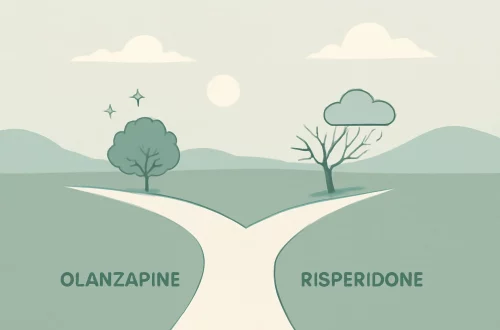
Can a Dog Have Parvo Twice and What You Need to Know
Parvovirus, commonly referred to as parvo, is a severe viral infection that primarily affects dogs, especially puppies. This highly contagious disease can lead to debilitating gastroenteritis, causing severe vomiting, diarrhea, and dehydration. The implications of a parvo infection are serious, with potentially fatal outcomes if not treated promptly. Understanding parvo is crucial for dog owners, as it not only helps in prevention but also in recognizing symptoms early.
The parvovirus attacks rapidly dividing cells, which explains why puppies and young dogs are particularly vulnerable, given their developing immune systems. Transmission occurs primarily through direct contact with infected dogs or contaminated environments, such as parks or pet stores. Given its resilience in the environment, parvo can survive on surfaces for months, making it essential for pet owners to maintain cleanliness and hygiene.
In the realm of canine health, concerns often arise regarding the possibility of a dog contracting parvo more than once. This inquiry is especially pertinent for pet owners who may have experienced the heartache of dealing with this disease. While the immune response post-infection can provide some level of protection, it is essential to understand that the dynamics of parvo infections are complex.
Understanding Canine Parvovirus
Canine parvovirus (CPV) is a highly contagious virus that primarily affects dogs, particularly those that are unvaccinated. It was first identified in the late 1970s and has since become a significant health concern for dog owners worldwide. The virus is known for its ability to cause severe gastrointestinal distress, leading to symptoms such as extreme lethargy, loss of appetite, vomiting, and profuse diarrhea. The latter can be particularly dangerous as it often leads to dehydration, which can be life-threatening if not addressed.
Parvovirus is transmitted through direct contact with an infected dog or indirectly through contaminated surfaces or objects. The virus can survive in the environment for extended periods, making it crucial for dog owners to maintain strict hygiene protocols, especially in public places where dogs frequently socialize. Puppies are particularly susceptible to parvo due to their immature immune systems, which is why vaccination is essential.
The parvovirus primarily targets rapidly dividing cells, which are abundant in the intestinal lining and bone marrow. This targeted attack can lead to a range of complications, including septicemia (blood poisoning) and severe dehydration. Early detection and treatment are critical for increasing the chances of survival, with supportive care often including intravenous fluids and medications to control vomiting and diarrhea.
Understanding the nature of parvovirus is the first step in preventing its spread. Vaccination is the most effective means of safeguarding your dog against this deadly virus. Most veterinarians recommend a series of vaccines starting at six to eight weeks of age, with boosters given throughout the puppy’s first year. Older dogs should also receive regular booster shots to maintain immunity.
Can Dogs Get Parvovirus More Than Once?
The question of whether a dog can contract parvovirus more than once is complex. Generally speaking, once a dog has been infected with parvo, it develops antibodies that confer some level of immunity against future infections. However, this immunity is not absolute. There are several factors that can influence whether a dog may experience a second bout of parvo.
Firstly, it’s essential to consider that the immunity gained from a past infection may wane over time. If a significant period has passed since the dog’s initial infection, particularly in the absence of booster vaccinations, the dog could be at risk of contracting the virus again. Additionally, different strains of the parvovirus exist, and it is possible for a dog to be infected by a different strain than the one it previously encountered.
Furthermore, the overall health and immune status of the dog play a crucial role. Dogs with compromised immune systems, whether due to other underlying health issues or a lack of proper vaccinations, may be more susceptible to repeated infections. Puppies and younger dogs are particularly vulnerable, as their immune systems are still developing, making them more prone to various infections, including parvovirus.
Preventive measures, such as regular vaccinations and maintaining a clean living environment, are vital in reducing the risk of re-infection. If a dog has previously battled parvo, ensuring it receives appropriate vaccinations and boosters is crucial for maintaining its immunity.
In summary, while it is possible for a dog to contract parvovirus more than once, several factors influence this likelihood. Maintaining a proactive approach to vaccination and overall health can significantly reduce the risk.
Symptoms and Diagnosis of Parvovirus
Recognizing the symptoms of parvovirus is critical for timely intervention. The signs of infection can vary, but they typically manifest within three to seven days after exposure to the virus. The most common symptoms include severe vomiting, bloody diarrhea, lethargy, and loss of appetite. Infected dogs may also exhibit signs of dehydration, such as dry gums, sunken eyes, and decreased skin elasticity.
Veterinarians often utilize a combination of clinical signs and diagnostic tests to confirm a parvo infection. A physical examination will typically reveal signs of dehydration and abdominal pain. To confirm the diagnosis, veterinarians may perform a fecal test specifically designed to detect the presence of the virus.
Given the severity of parvovirus, prompt veterinary care is essential. If you suspect your dog has parvo, it is crucial to seek veterinary assistance immediately. Early treatment can significantly improve the chances of recovery and reduce the risk of severe complications. Treatment often involves hospitalization, where the dog can receive intravenous fluids, medications to control vomiting and diarrhea, and other supportive care.
Preventing parvovirus is always better than dealing with the consequences of an infection. Vaccination remains the most effective method for protecting your dog, as it helps the immune system develop a robust response to the virus. In addition to vaccinations, dog owners should maintain strict hygiene practices, such as regularly cleaning and disinfecting areas where dogs congregate.
Preventing Parvovirus in Dogs
Preventing parvovirus is a responsibility that dog owners must take seriously. Vaccination is the cornerstone of prevention, but several other measures can significantly reduce the risk of infection.
Firstly, it is essential to ensure that puppies receive their vaccinations on schedule. The initial vaccine series typically begins at six to eight weeks of age, with boosters administered every three to four weeks until the puppy is about 16 weeks old. After the initial vaccination series, adult dogs should receive booster shots every one to three years, depending on the veterinarian’s recommendation and the dog’s risk factors.
In addition to vaccinations, maintaining a clean environment is crucial. Parvovirus is notoriously resilient and can survive on surfaces for months. Regularly cleaning and disinfecting areas where dogs spend time, especially in high-traffic areas like parks and kennels, can help prevent the spread of the virus.
Limiting exposure to potentially infected dogs is another preventive measure. Avoiding places where many dogs gather, particularly during parvo outbreaks, can reduce the risk. It’s also wise to keep unvaccinated puppies away from public areas until they have completed their vaccination series.
Educating yourself and others about the signs and symptoms of parvovirus is vital. The sooner an infection is recognized, the quicker treatment can begin. Awareness can also extend to your community, ensuring that other dog owners are vigilant and proactive in protecting their pets.
In conclusion, dog owners play a crucial role in preventing parvovirus through vaccination, hygiene, and education. By taking these steps, you can help ensure your furry friend remains healthy and protected from this potentially deadly virus.
*Disclaimer: This article is for informational purposes only and should not be considered medical advice. Always consult your veterinarian for concerns related to your pet’s health.*




